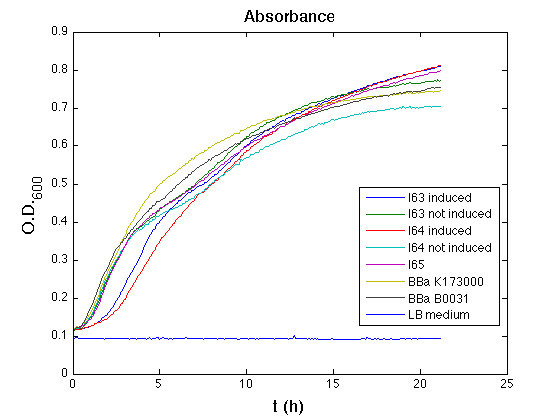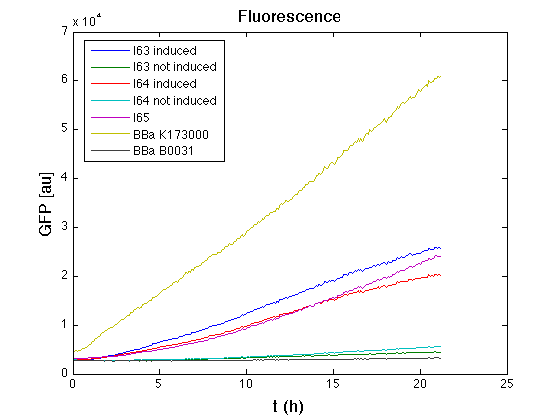|
28° TEST
[SEPTEMBER, 28TH]
PLATE
EXPERIMENT DESCRIPTION
Motivation
This experiment was performed to check bacterial growth and GFP rate synthesis of the following constructs in order to verify right protein folding and efficiency of inducible system assembled upstream of some genetic circuits.
Methods
Inoculum (into 5 ml LB+Amp) from glycerol stock of:
- I63
- I64
- I65
- <partinfo>BBa_K173000</partinfo> (positive control)
- <partinfo>BBa_B0031</partinfo> (negative control)
They were let grow ON at +37°C, 220 rpm.
The following day cultures were diluted 1:100 and let grow again for about five hours at +37°C, 220 rpm.
Optical density (O.D.) of each cell culture was than measured with TECAN Infinte F200. Samples were diluted in order to obtain the same O.D. equal to 0,02.
Than we performed a 21 hours' experiment with measurements of absorbance and green fluorescence every five minutes with TECAN Infinite F200. I63 and I64 circuits were also induced 100nM with HSL directly into multiplate well. Each value shown is the mean of three measurements, from GFP data that of a non-fluorescent culture (negative control) was subtracted; cultures were shaken for 15 seconds every five minutes.
RESULTS
All induced and uninduced cell cultures showed a similar growth curve. After an initial interval in witch GFP production rate was significantly higher in positive control <partinfo>BBa_K173000</partinfo> than in the other samples, GFP synthesis rate of induced I63 and I64, I65 became very similar to this one. It was still lower than positive control, but was constant during almost all the experiment. This showed the right folding of the green fluorescent protein assembled downstream of the genetic circuit and the efficiency of the HSL inducible system. As expected uninduced I63 and I64 didn't produce any GFP, behaving as negative controls.
|
 "
"



